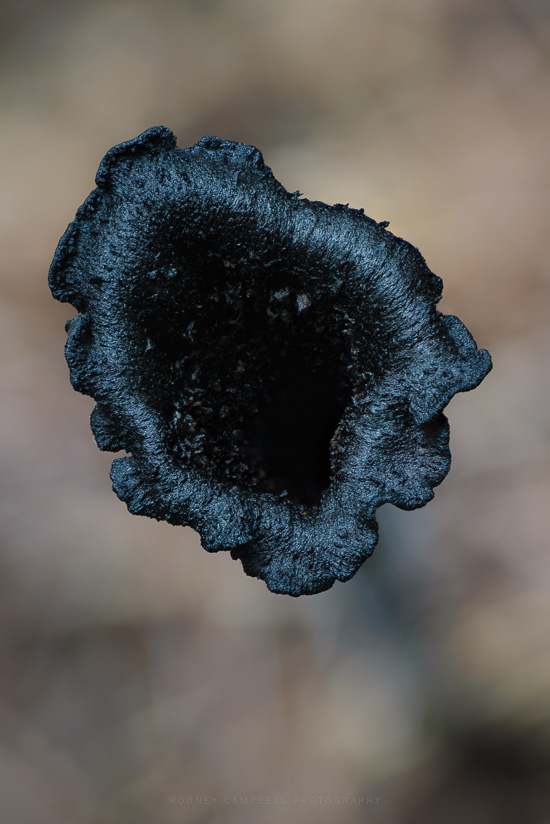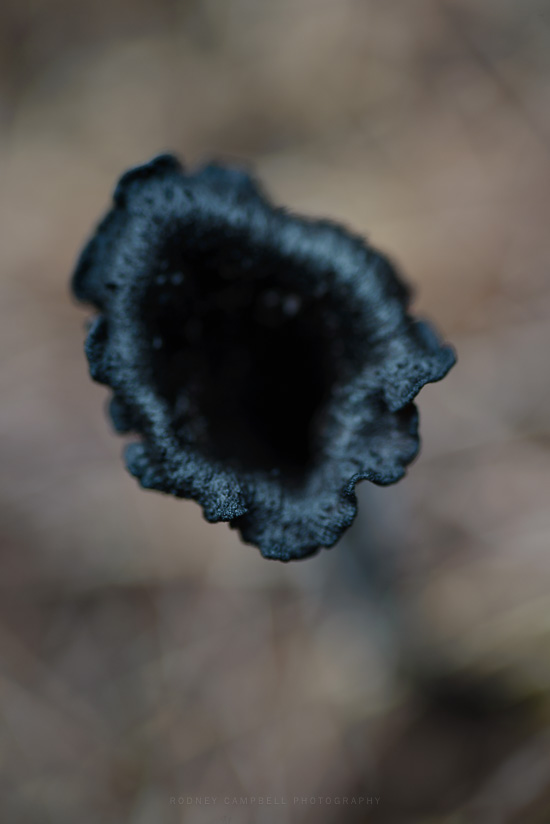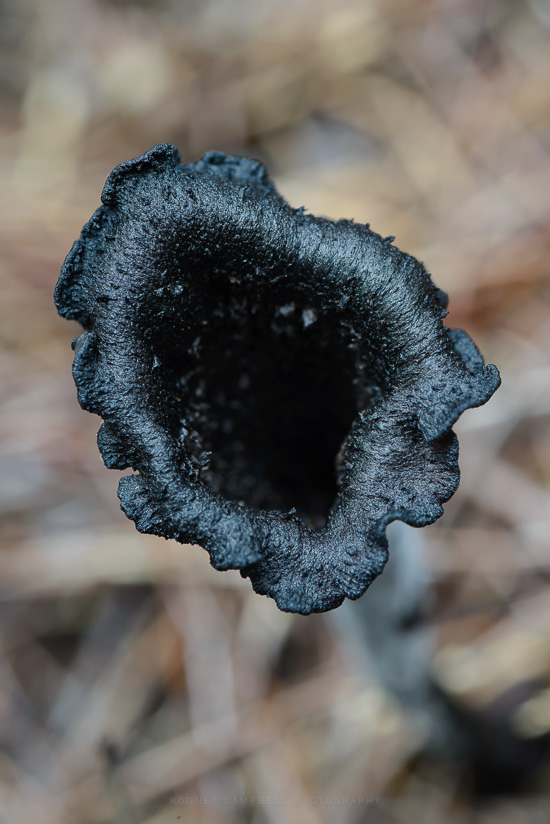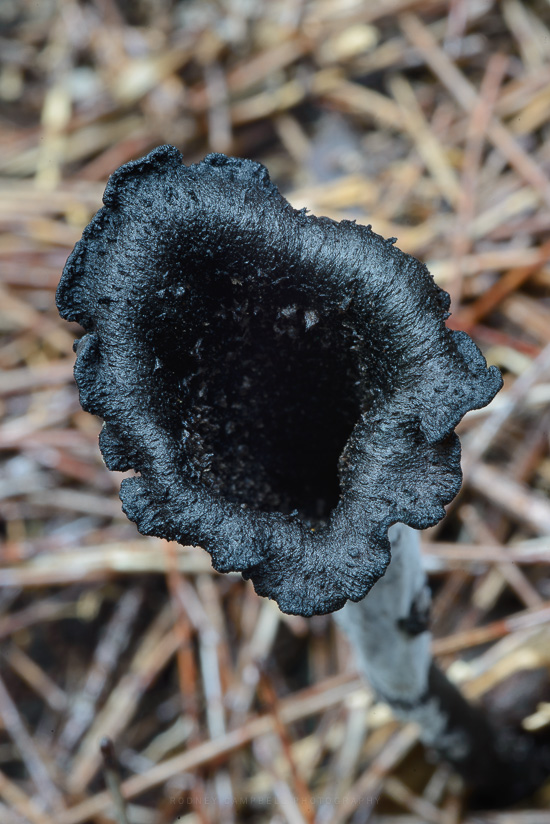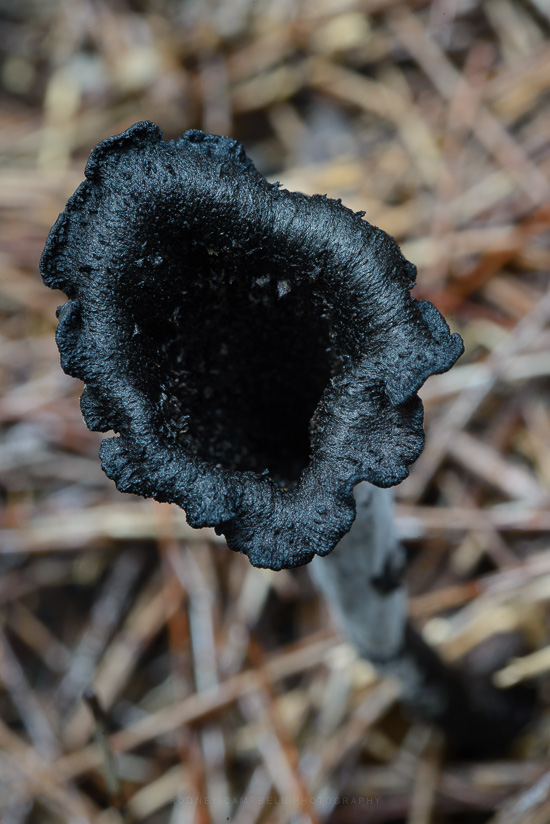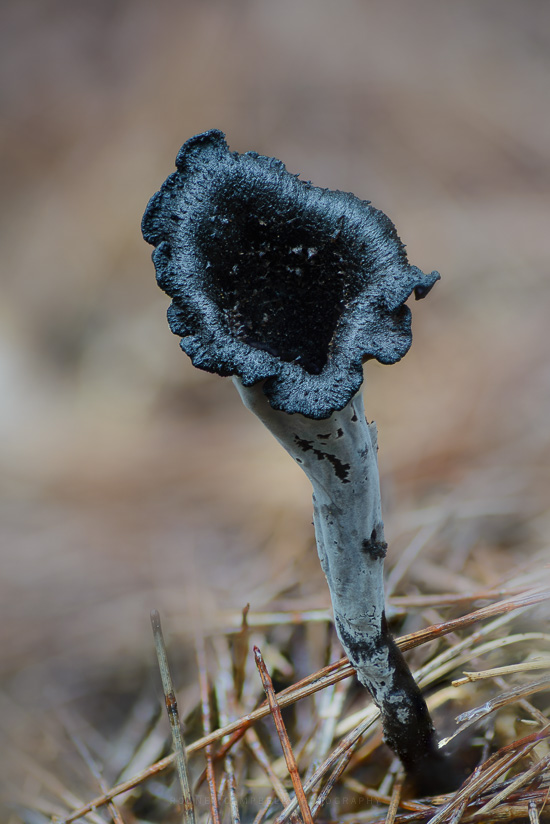Stacks of Focus…
by Rodney Campbell on May.05, 2015, under Life, Photography
Was on a wet bushland photowalk with some friends on a drizzly day when we came across an interesting looking black fungi poking out amongst the debris on the ground.
I’d brought my Tamron 90mm Macro lens this day (in anticipation of the chance of some macro work) so it was a quick change of lenses and setup on the tripod to take a shot.
Blackhole
This particular fungi looked almost like the horn of a saxaphone with a wide mouth funnelling down to a longer stem attaching it to the ground. Shooting at a slight angle to the plant meant a reasonably nice composition but lot of limitations with regards to depth of field (at these very close distances to a subject this small the depth of field is extremely thin). The flattest area from a depth perspective was shooting from above at the top surface and even that was quite ruffled and I had no expectation of getting any of the hole inside the plant in focus.
So I setup my tripod to shoot from above and planned to use a technique I’d used before but hadn’t for some time now – that of Focus Stacking. Some interest in Focus Stacking within my Arcanum cohort reminded me of this technique and I looked to apply it here.
The shot up top is the result of focus stacking thirty two (32) manually taken frames shot at f/8 and 1/10th of a second at ISO 100. Down here right on the ground in this scrubby patch of bush there wasn’t really any wind to speak of so I wasn’t worried about the shutter speed or my subject moving.
With the camera firmly locked down and the lens in manual focus mode I proceeded to take shot after shot (using a remote wireless trigger in one hand). At the same time I manually adjusted the focus ring of the lens with the other hand between shots. I was aiming to take shots from slightly this side of the nearest part of the fungi I wanted to be sharply in focus all the way through the fungi to the farthest part I wanted in focus (somewhere inside the canal of the fungi).
The trick here is to rotate the focus ring ever so slightly and gently so that:
– the individual frames overlap slightly in their areas/depths of focus
– and to not bump or move the camera
Because I don’t have any mechanical tools or electronic aids to determine the amount of focus shift required I basically wing it and hope I do a good enough job with my micro focus adjustments. Ideally I take more shots than are needed and not less (because then there will be areas of out of focus between areas of focus through my subject).
As you can see from the end result above I did a pretty good job.
To give you an idea of how little depth of field we have to work with – here is one of the individual frames shot at f/8 showing the tiny sliver of the subject in the depth of field.
Before shooting any of the stack I also shot some images stopped down to try and get enough depth of field to cover my subject in one shot.
This first was shot at f/22 and it’s actually not too bad – much of the top surface is in apparent focus. The funnel inside is definitely not and there are definite areas of the frill of the fungi which are out of focus. Lastly the background whilst definitely blurred is a bit too busy and distracting.
The second shot was throwing the whole kitchen sink at it – shot at f/64 and 10 seconds we have remarkably little if any movement and the depth of field is really very good – tho still not right down in the funnel. Very few lenses for 35mm cameras can even stop down to f/64 which is a really tiny aperture and we’re now firmly entrenched into diffraction territory (tho the results here look pretty good). However the background really starts to become very apparent and is totally distracting rather than being the nice soft bokeh blur of the focus stacked image.
Lastly here’s one hedging my bets – shot at f/36 (still well into diffraction territory) but the DoF covers all the top frill of the fungi and the background is a little better but still pretty ugly.
Finally this one is a thirty six (36) image focus stack showing the whole fungi for reference.
Upper Brass
